Whether you’re worried about VR motion sickness before purchasing your very first VR headset, or you’ve just experienced it for the first time, as a fellow VR headset user and enthusiast I’m here to help you out!
See also: My Pico Neo 3 VR Headset Hands-On Review! – Is It Worth It?
How Many People Are Affected By VR Motion Sickness?
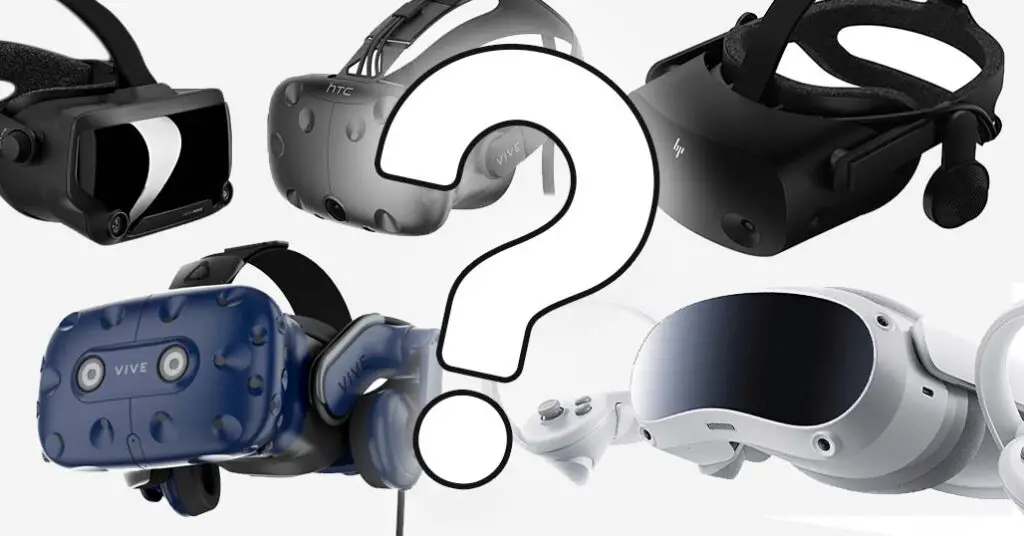
It is said that even around 40% of people experience the negative effects of VR motion sickness in the context of both professional flight simulations using HMD technology and commercial virtual reality headset use. This number is estimated to be much higher, in certain circumstances reaching even up to 70 percent of the VR users, depending largely on the types of activities the users partake in inside the virtual world.
Yes, this means that you’re certainly not alone with this problem. It happens to many people using VR technology, and it still happens to me from time to time. In other words, there’s nothing wrong with you if you’re experiencing it, and as you will see in a while, there are a few neat tricks to help you reduce it.
When Can You Experience VR Motion Sickness?
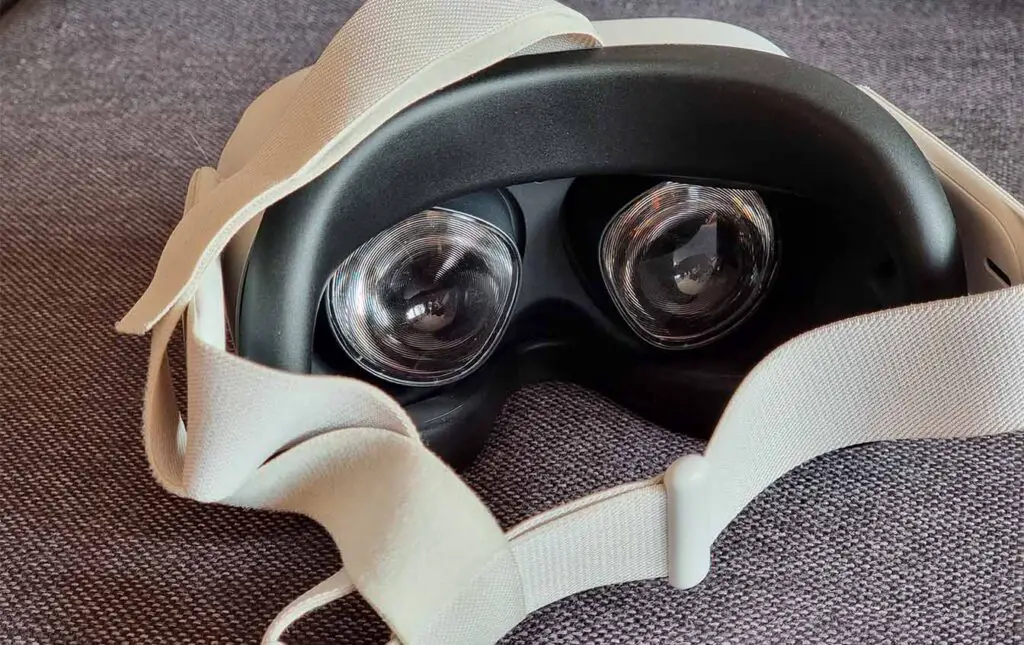
Does virtual reality motion sickness start the second you put on the headset? Well, no. At least not for the majority of VR headset users. There are two most common things that act as triggers for the unpleasant feelings to begin and they are firstly prolonged VR headset usage, and secondly experiencing fast fluid motion in the virtual world and simultaneously remaining virtually motionless in real life (pun intended).
The most commonly experienced symptoms of the so-called “VR sickness” in its base form are nausea, disorientation, headaches and eye strain. You would know if you’ve ever felt it!
The factors that contribute to experiencing these negative feelings are among others: the type of locomotion/in-game movement chosen by the player, overall characteristics of the content you’re immersed in using your HMD, and the overall time of exposure. But that’s not all!
What Causes You To Feel Nauseous In VR?
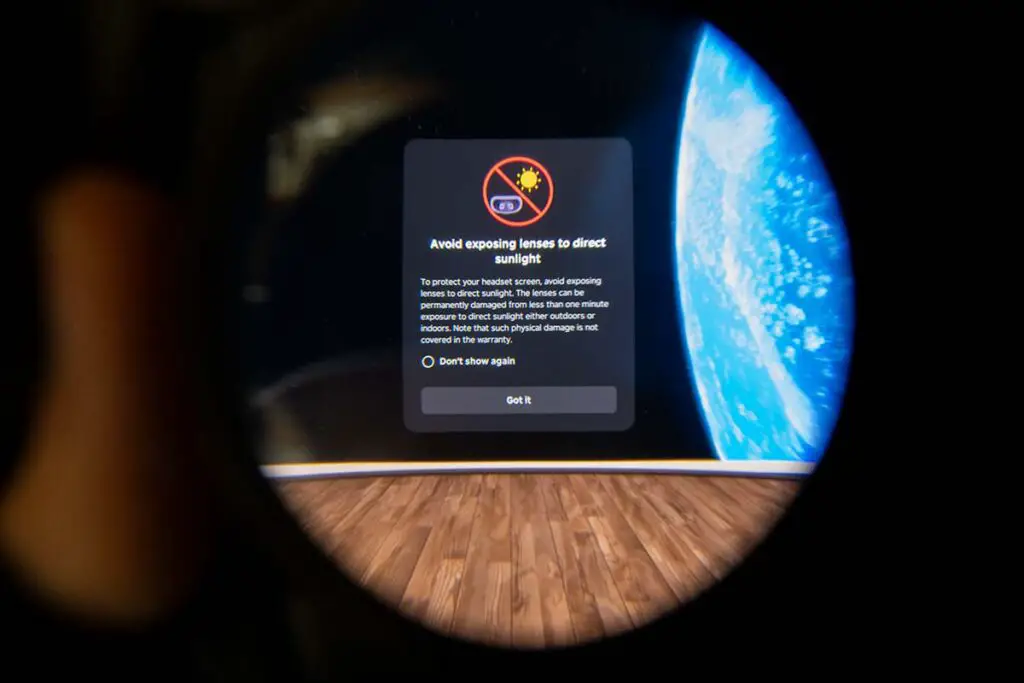
Here are a few things that can rather easily trigger your VR motion sickness, and are generally considered to be its main causes:
- Discrepancy between the perceived movement in VR and the actual movement of your body (or lack thereof).
- Fluid walking movement in the virtual world instead of using teleportation mechanics or snap turns.
- In-game frame drops, or significant FPS drops during gameplay.
- Fast-paced gameplay reliant on quick movement (for example in games such as Boneworks, or dynamic VR first-person shooters).
All of these triggers, as you might have guessed you can come accross pretty often in most virtual reality games and experiences. With that said, many pieces of VR software also feature settings that you’re able to tweak that are meant to minimize the negative effects of moving around in the virtual space. But more about that in a short while!
Now let’s get to the most important question – does VR sickness go away? Can you actually just “get used to it”?
Does VR Sickness Get Better Or Go Away With Time?
The direct answer for this question is that while it certainly can get better with time, as you can get used to moving around in the virtual world and minimize the impact and effects of the VR motion sickness with each next VR session, it really depends on your particular sensitivity to the effects of this phenomenon – just like with motion sickness in a car.
If you’re asking about the immediate negative effects, the recent studies have shown that these tend to go away about 10 minutes after taking off the headset. So that’s some good news.
All the methods that I’ve listed below can certainly help you with prolonging your VR sessions without experiencing irritating side effects, however in the end it’s really a little bit different for anyone, and there are many things such as fluid movement when walking in VR using smooth movement settings that are almost always bound to trigger some kind of response from your body during the gameplay after prolonged exposure.
Don’t try to push through it when you start feeling unwell while wearing your headset. This is not going to make things better and will never work out in the end. Rather, take a short rest, let yourself fully reset, and after the break when you feel better attempt to go back to your VR adventures again.
You might find that after a some VR sessions you will get used to the sensations associated with the VR headset use, and you will be able to play for much longer than you could in the beginning!
Now let’s move on to the tips that have worked out for me! While I first did experience the VR motion sickness seemingly at random times, most of these methods have been really helpful for me and they enabled me to prolong my gaming sessions in virtual reality without feeling many of the negative effects that seriously worried me when I started using my headset. Read on if you want to know more!
1. Move Around More
As one of the main causes of the VR motion sickness is the discrepancy between the motion that your eyes can see, and the relative motionless state of your body during gameplay, moving around more can actually help you mitigate a large part of the problem.
Whenever you’re moving in the virtual world, pretend to walk around, pace and move your body as if you were moving in the real world. This can help you trick your brain into thinking that the movement your eyes see is actually taking place, and can in turn minimize the risk of you feeling nauseous when gaming in VR. This is one of the simplest tips that’s actually simultaneously one of the most effective ones!
2. Ditch The Fluid Motion Controls
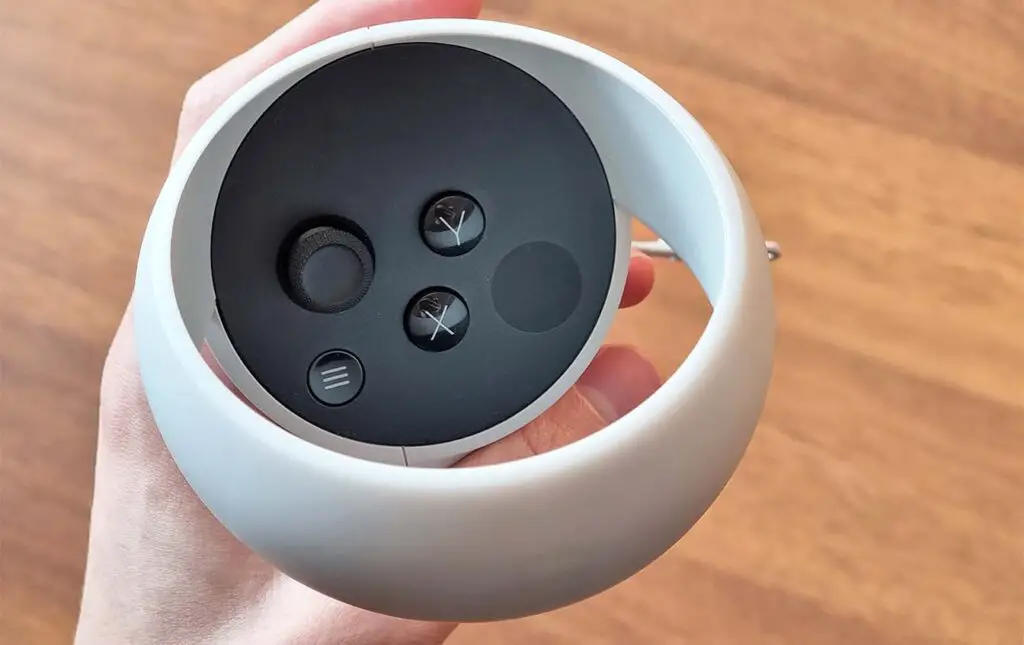
Most of the top VR games and experiences out there let you move around in the virtual world in 3 different ways. The first way is the smooth fluid motion simulating walking using the analog stick on one of your controllers, the second one is instant teleportation or warping when your character instantly moves to the place you point your controller at, and the third one, a little bit less popular – moving your hands to emulate walking movements and move your character forward.
The thing is, however cool the firstly mentioned smooth and seamless movement looks like, it’s actually one of the top VR sickness inducing factors, especially if your character is moving in a fast and seemingly unnatural way. To prevent motion sickness setting in, always try to change your movement settings to instant teleportation. This is straight away one of the most important technical tips on this list.
This very same thing applies to the player character rotation movement which can in most cases be set either to smooth turning, or snap turning which usually turns your character in increments of around 15-35 degrees in the selected direction. Always select the second option if you have a tendency to experience motion sickness in VR.
3. Use Edge Darkening / FOV Reduction When Available
As I’ve already mentioned, many games offer additional settings that can help you with preventing experiencing VR sickness. One of these settings that’s really effective is edge darkening, sometimes also simply called “FOV reduction”.
This setting if present, digitally reduces your field of view by utilizing either fading out the edges of the screen (at all times or in certain conditions), or incorporating an in-game overlay resembling a helmet or another kind of headpiece (commonly found in VR roller coaster experiences).
While this certainly takes a part of the experience away, as you’re not able to see as much things around you without turning your head, it really can help you reduce the negative effects of fast-paced motion you can experience in many VR games. Feel free to try it out wherever it’s available.
4. Mind The Refresh Rate
In general, higher refresh rates without significant frame drops during gameplay can help reduce motion sickness in VR. That’s pretty much it. If your hardware is able to support for instance 120fps gameplay you can try upping your framerate to try and fool your brain a little bit better and prevent feeling unwell while playing your VR games.
Mind that if you experience any kind of significant lag or latency when in VR because of insufficient hardware or faulty PCVR connection, it can actually further contribute to you feeling the side-effects of wearing your headset faster. All in all, maintaining a constant high framerate of 60 fps, or ideally 90-120 fps is one of the keys for the most pleasant experience in VR with minimized risk of experiencing VR motion sickness symptoms.
Your GPU can’t quite keep up with your VR headset? Here are the best graphics cards that you can get today! – Best GPUs To Upgrade To In The Current Year (My Honest Take!)
5. Ginger

Ginger in all of its popular forms such as ginger candy, ginger tea, or even ale, can help you with VR motion sickness because of its natural calming and anti-nausea properties.
Consider trying out either food containing ginger, or ginger supplements. These can help you get over the side-effects of exploring the VR worlds. That’s really all that there is to it!
6. Few Minute Rests Work Wonders
While this might be quite an obvious tip, trust me on this one. Stop the second you start feeling unwell, and take a 10-15 minute break doing some other stuff you would do during the day anyway.
As I’ve mentioned earlier, the average recovery time for most VR users is around 10 minutes, so after that time passes you can attempt to immerse yourself in VR again. This way you will be able to continue using your headset, possibly for even longer than you did for the first time. Remember to not overdo it!
If however you’re still feeling any negative effects right after the break, consider changing the game you’re playing or the content you’re viewing after the next break – it might just be an experience that’s harder to adjust than the others!
7. Have a Fan Pointing at You During Gameplay
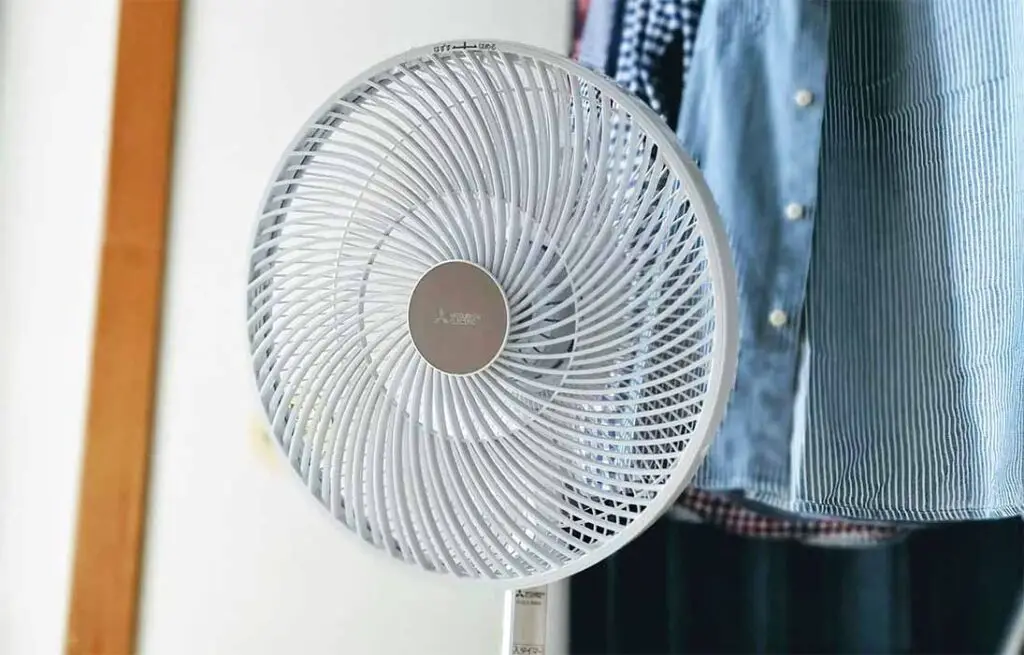
This probably sounds to you like a made-up remedy, but you can’t be sure unless you try it! Point a fan at your play area and use your headset as you normally would. There is a high chance that this will help you with the overall confusion of your brain when it comes to your body positioning when you’re exploring the virtual world!
Many users online have backed up this theory, and it did work for me too! It’s a really simple and noninvasive way of trying to deal with this problem. Let me know if it did work for you!
8. Marijuana Or CBD
If medicinal weed is legal in the place you live, marijuana actually has some natural anti-nausea properties, and in right dose could help you with overcoming VR motion sickness. It could also potentially enhance your overall experience depending on your preferences. While this is certainly not a tip for anyone, you can consider trying it if you feel like it might work for you!
Hemp oil and CBD supplements can also work here, so if you think that you should try it, be sure to remember that tip next time you enter the virtual world!
That’s It – Hope You Found These Tips Useful!
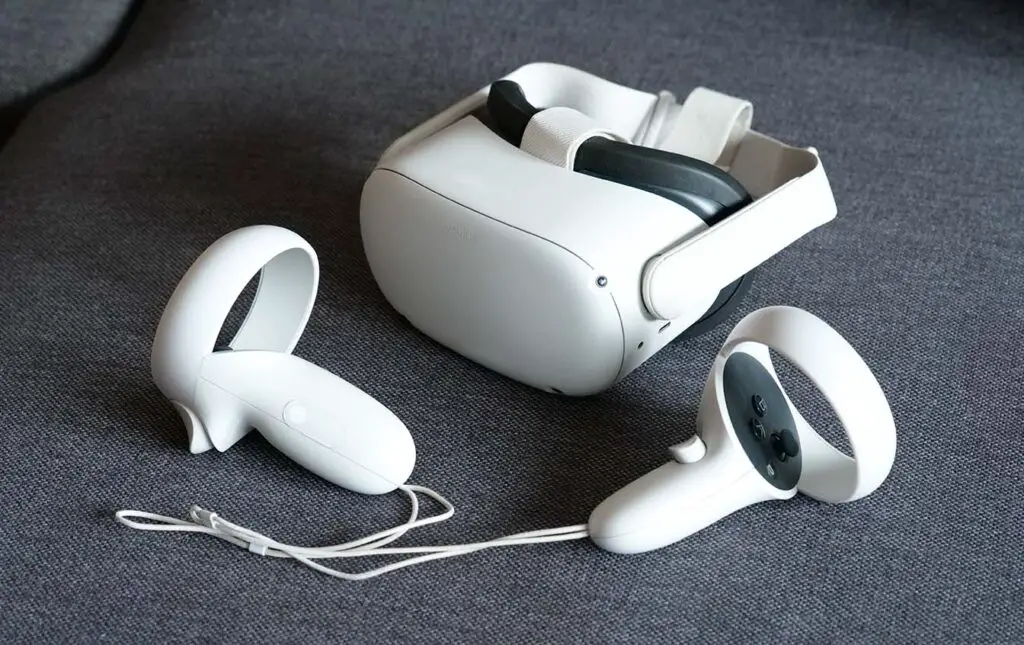
These tips have been very useful to me when I was just starting out my journey with VR, and I’m happy to now share them with you. Just remember that VR motion sickness is actually a widespread problem that in many cases and contexts (such as for instance generic fast-paced gameplay, or many popular virtual reality first person shooters) affects most commercial VR headset users.
Let’s hope that the future of VR technology will bring even better simulation quality and immersion factor to the game, and that in a few years the VR motion sickness will be the problem of the past. Until then, you can tell me in the comments below how well you handle long VR sessions!
If you want to know more, you can check out this official article from PicoXR about VR motion sickness prevention tips, it goes over a few different aspect of the problem, and they, as the manufacturers of the famous line of Pico VR headsets really know what they’re talking about!
You might also like: Fresnel vs. Pancake Lenses For VR – Which Ones Are Better?


